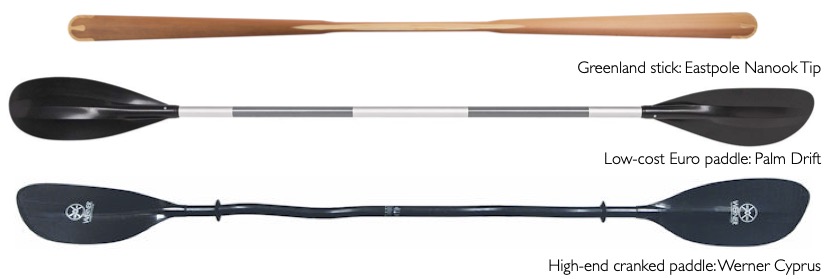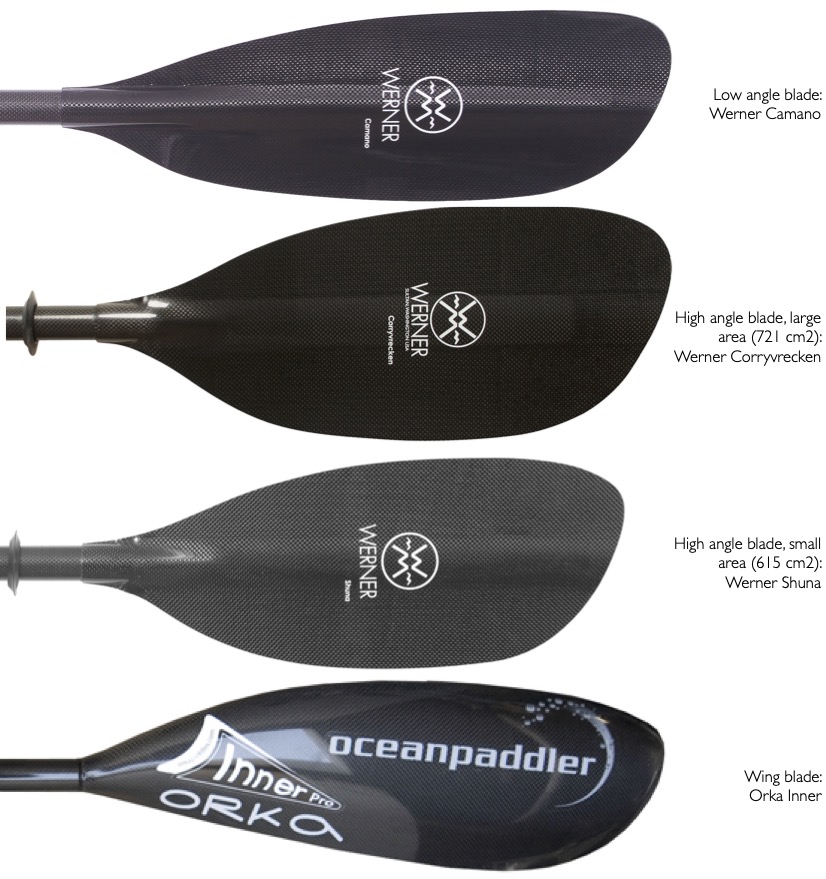4.3 Paddle designs
The Inuit used long slender wooden paddles. This was likely due to the materials (driftwood) and fabrication techniques available, but some modern paddlers enjoy using ‘greenland sticks’. They require a different technique compared to standard ‘euro’ paddles.

Paddle materials vary, depending mostly on the cost of the paddle. Shafts for cheap paddles use aluminium, although carbon and fibreglass composites are becoming increasingly widespread at many price points. Blade materials vary from injection moulded plastic for cheap paddles to fibreglass and carbon composites at the high end.
Paddle shafts can be straight, or ‘cranked’ with a bend that places the wrist at a more neutral angle. Some paddlers find these cranked shafts more comfortable to use, or find that they reduce the incidence of injury. Sea kayak paddles almost always split into two sections to enable them to be carried as spares. The joint generally allows feather to be adjusted and often allows length to be varied by around 10 cm.
Paddle blades come in a range of shapes. The main categories are:
Low angle paddles - long and thin - intended for a ‘low angle’ stroke where the top hand is kept around shoulder height or lower.
High angle paddles - shorter and fatter - are intended for a more efficient ‘high angle’ stroke where the top hand comes to forehead height.
Wing paddles - originally designed for racing, these paddles provide an impressive level of power if used correctly. Whilst they can be challenging to use in rough water, some advanced paddlers find them excellent for covering long distances on the sea.

Paddle length and area are important as they affect the force that the paddler applies to the paddle. Using overly long or large blades can cause fatigue or injury over long days.
Some kayakers use paddle leashes to attach the paddle to their boat. This prevents the paddle being lost during swims and rescues. However, they are unusual in the UK due to the the potential for the paddler to become entangled in the leash in rough water.